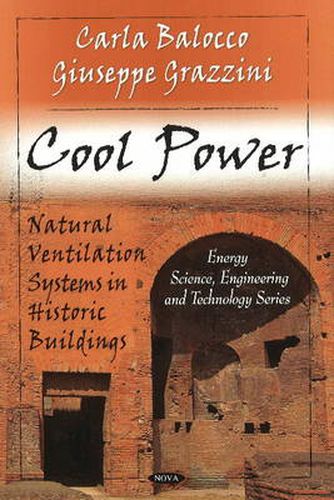Readings Newsletter
Become a Readings Member to make your shopping experience even easier.
Sign in or sign up for free!
You’re not far away from qualifying for FREE standard shipping within Australia
You’ve qualified for FREE standard shipping within Australia
The cart is loading…






Natural ventilation in buildings, generally belongings to bio climatic design, can provide a comfortable indoor climate and major possibilities for energy saving and reducing energy consumption due to mechanical ventilation and air conditioning systems. Natural ventilation is the most efficient passive cooling systems, which was also used in traditional, historic architecture to improve thermal efficiency and indoor building comfort. Many historic buildings in Italy were split between summer and winter apartments. the summer apartment was located on the ground floor and frescoed. Its cool indoor climate was due to the presence of surrounding gardens and to the high thermal inertia of the ground and wall. Sometimes these rooms benefited from effective natural air-conditioning systems with air channels, gratings. underground openings and rooms and basins for rain water storage. Some architectural structures inside historical buildings are often interpreted as cooling systems. The problem is the knowledge about the real functioning of these systems during the past and at the present.
$9.00 standard shipping within Australia
FREE standard shipping within Australia for orders over $100.00
Express & International shipping calculated at checkout
Natural ventilation in buildings, generally belongings to bio climatic design, can provide a comfortable indoor climate and major possibilities for energy saving and reducing energy consumption due to mechanical ventilation and air conditioning systems. Natural ventilation is the most efficient passive cooling systems, which was also used in traditional, historic architecture to improve thermal efficiency and indoor building comfort. Many historic buildings in Italy were split between summer and winter apartments. the summer apartment was located on the ground floor and frescoed. Its cool indoor climate was due to the presence of surrounding gardens and to the high thermal inertia of the ground and wall. Sometimes these rooms benefited from effective natural air-conditioning systems with air channels, gratings. underground openings and rooms and basins for rain water storage. Some architectural structures inside historical buildings are often interpreted as cooling systems. The problem is the knowledge about the real functioning of these systems during the past and at the present.